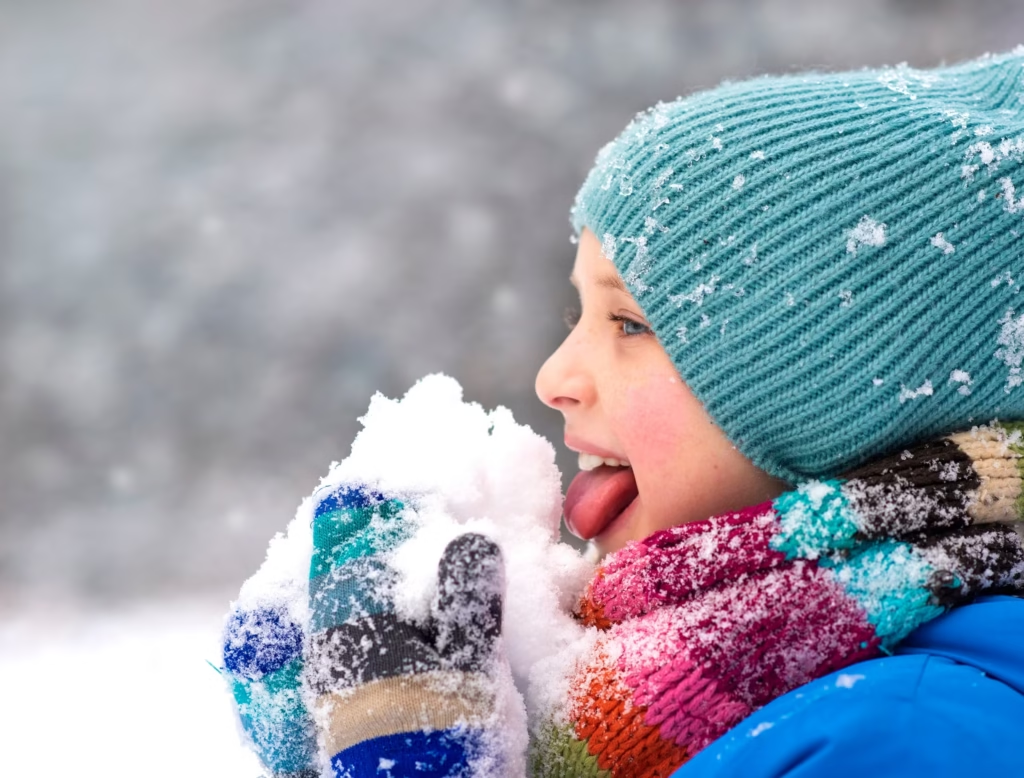Snowfall on snowy days is a recreation that comes to the mind of everyone. But have you ever been in a position to have to choose a snowy day at home? Have you thought about snowy daytime? You can sit in front of the window and watch the winter that is beautiful for you as you have sheltered a cup of Hotchael between your two hands.
You may choose other leisure where the snow has no direct role. For example, you may read a book or watch the movie. But snowfall fun does not end there. You may think to yourself, now that you can’t play snow, it’s not bad to bring the snow home! But how about? You might think about eating snow. But is there no problem? In the following, we want to get out of this story.
What has the snow came from?
You might think that someone asks what the snow is made of is a strange or maybe even funny question. You might say to yourself, that it doesn’t ask! The snow is the same water. But that’s not all! It is true that snow is mainly made up of water, but depending on where you have collected the snow, it may contain other ingredients.
Snow may contain sulfates, nitrates, pesticides, carbon and even contaminants and harmful chemicals such as formaldehyde or mercury. While snow is originally mainly made of water, it can collect pollutants in the atmosphere when falling from the sky. Then, when it reaches the ground, it can be combined with other chemicals in the ground. Some of the most common compounds that may enter the snow are:
- Black carbon (soot): It is released from coal fuel plants and wooden heaters.
- Pesters and fertilizers: They are sprayed on grass and fields (this is especially true in ordinary farms where winter vegetables grow).
- Pollutions: Like sulfates, mercury and DDT.
- Gas gasoline gases: Like toluene, xylene and benzene (known as carcinogens).
- Chloride Magnesium: There is a plowed snow.
Since eating snow can be associated with the dangers of contamination with the above mentioned compounds, it is best to use fresh and intact snow in clean and distant environments. But remember that staying hydrated with ordinary water is more reliable than you want to drink snow for the water in it.
Is the snowflake?
In most cases, yes, eating fresh snow is recently safe, but there are some tips that you should be careful. The best way to avoid eating contaminated snow is to remove fresh snow that collects snow after a few hours.
The first snow, or as Shamloo New Snow, is likely to collect pollutants in the air, but the snow that takes a few hours later will be cleaner because much of the pollutants in the atmosphere have already been taken. Make sure that the snow you eat is not the result of snowstorms or no one has gone on it.
Before you eat snow, be careful:
- If the snow is in your back yard, it is best to eat the snow on top of the mass or the middle, but leave the snow that has been in contact with the ground. The snow directly on the ground is likely to get pesticides from your grass or soil, although the concentration of pesticides in the snow will still be low.
- Snow in the backyard, such as open parks or quiet neighborhoods, is likely to be cleaner than snowy in populated urban areas, due to the number of pollutants and stomach outlets in the air.
- It goes without saying that snow that has been stacked with chimneys, active volcanoes, or radioactive radiation events is insecure and has no eating. The snow that is high in rural areas with agriculture may contain large amounts of agricultural chemicals.
Where is the best time and place to collect snow?

The best time to collect snow is a few hours after the start of rainfall. The early snow is likely to collect pollutants in the air, but the snow that takes a few hours later will be cleaner. After about one to two hours after the beginning of the rain, a fresh snow without contamination will sit on the ground. Also, it is ideal to collect snow after prolonged rainfall and when the weather is completely cold and windless. This time reduces the likelihood of absorption of pollutants.
Places that are suitable for snow collection must be far from the sources of pollution. Rural areas, large parks and mountains are good places because snow in these areas is less likely to face urban and industrial pollutants. Also, avoid collecting snow near the chimneys, factories, and areas with heavy traffic, as snow in these areas may contain pollutants such as soot and outbound gases.
It is also important to use fresh and untouched snow. Snow that does not contact humans or animals and is not on an unclean surface and is not mixed with soil or other contaminants is the best option for collecting. Areas at higher altitudes, such as mountain slopes, are also good places to collect clean and clean snow.
Ultimately, protected areas and national parks that are populated are the best places for clean and safe snow collection. By following these tips, you can collect clean and safe snow that is empty of harmful pollutants and chemicals. Paying attention to these factors can help you enjoy winter nature and use clean snow.
What are the advantages and disadvantages of snow?

Even when the snow collects from the air or land, it is still very clean. Studies show that fresh snow is even purer than most drinking water. If you are going to eat snow, one of the common recommendations is to consume a limited amount, such as one or two fists a day. This method is low because the amount of chemicals in the snow in most places is not high.
What are the benefits of eating snow?
- Increased water consumptionEating snow helps increase water consumption, which fights dehydration. Snow is mainly made up of water, and drinking water is important for many physical functions, including digestion, detoxification, and so on.
- Environmental sustainability: Snow comes directly from the sky! Snow does not consume resources or does not come in plastic bottles, so it is useful for the planet.
If you want to consume a lot of snow, such as while camping, you can melt the snow to provide drinking water and then cross any filter you have or use it to prepare distilled water to ensure more purity. .
Why not eat snow?
Although eating snow can provide a different and attractive experience, it is not bad to be aware of the most important disadvantages:
- Snow can absorb materials in the air and ground, such as bacteria, soil, pollutants and problematic chemicals.
- While no snow -related disease is recognized as major risks to the general public, eating infected snow may cause gastrointestinal problems or other reactions.
Does eating snow make the body dehydrated?

You might think the answer is negative. Because the snow is made up of frozen water crystals, it should be hydrate, right? Yes, but not too fast.
According to experts:
You spend energy to melt that snow in a drink. You use your body’s energy to melt the snow with your body. Any hydrate you get from eating or drinking snow is not as much as the energy you consume to melt. Therefore, over time, if you consume a lot of snow, it can theoretically dehydrated.
Another thing to consider is whether eating snow can make you hypothermia. If you are playing in the backyard and however, you will not be a problem. But hypothermia can occur if you are dependent on snowfall.
Think of someone who is in the state of survival in nature or has no other option, in this case, you are in the cold before. However, consuming a lot of snow can reduce your body temperature overall.
Do you get sick with snow?

It is unlikely, but if you consume infected snow, it is still possible. In general, a small amount of snow is considered safe and non -toxic, but eating too much can cause stomach or complications such as vomiting, diarrhea or infection, if the snow contains pollutants.
However, doctors and researchers believe that eating snow is safe for most people, provided that the snow is clean and white that is collected from a non -infiltrated place and in a non -inflatable plain, but always a small risk for people with a weak immune system. Or there are young children.
Taste the taste of snow?
Is eating snow safe? Yes and no, it depends on the type of snow and your place. It is usually safe in small to average, especially if it is snowy that is low in air or land pollution. The problem is that with snowfall, it can collect things like pesticides, sulfate, nitrate, formaldehyde and mercury.
To eat snow, after an hour or two of the snow, collect it to prevent infected snow.
Make sure you just eat the clean, white snow that has just raised, not brown, gray or yellow. Never do not eat snowfall and be careful about the snowfall in the pesticides, urban areas or dirty streets.
Knowing that we should not eat any snow and eat snow has its own disadvantages, but if you have never snowed and access fresh snow in clean areas, it will try it. You can also add a little grape juice, palm juice or berry juice to healthy snow to reduce its inhumanity and sweeten your palate slightly. Have you ever been snowing?
By looking at: ClevelandClinic , DRAXE
Source Link

